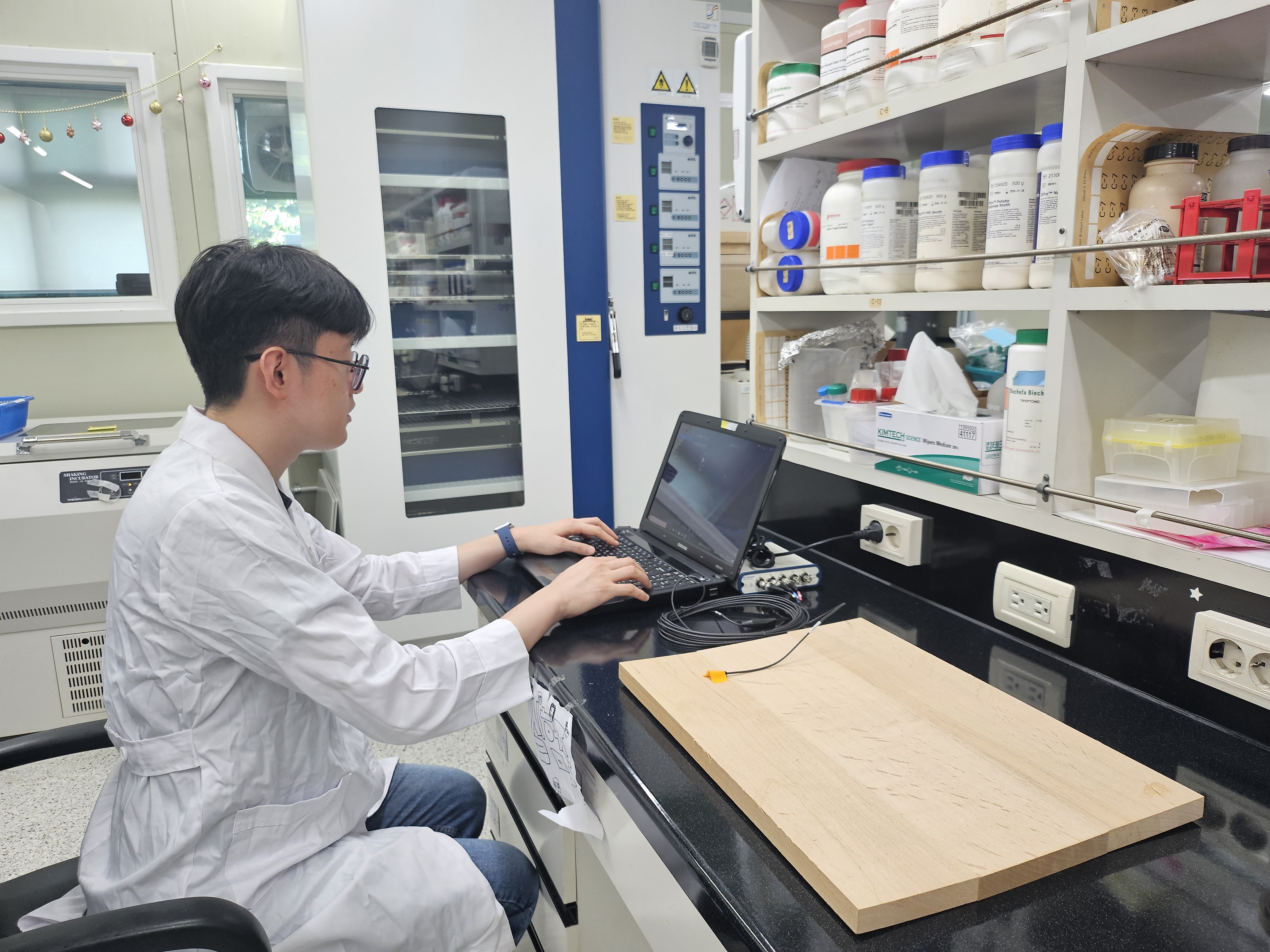- 한국어
- English
- 日本語
- 中文
- العربية
- Español
- Français
- Deutsch
- Pусский
- Tiếng Việt
- Indonesian

A researcher at the National Institute of Forest Science examines the acoustic properties of wood using microorganisms. (National Institute of Forest Science)
By Charles Audouin
The National Institute of Forest Science (NIFS) on July 10 announced its development of a technology to boost the acoustic properties of wood used to make string instruments by using wood-rotting microorganisms.
It also published a related paper and filed a patent application for its invention.
The method has wood-rotting fungi invade wood tissue and decompose components such as cellulose and lignin to get nutrients.
Through experiments, the NIFS confirmed improvements to the main sound traits of the acoustic constant and acoustic conversion efficiency. The results came after eight types of the fungi were applied to wood from domestic maple and alder trees, both of which are widely used in making string instruments.
Both characteristics are quantitative indicators of sound quality. The higher the value, the better the transmission of sound vibrations.
In an experiment with eight types of the fungi, Ceriporia lacerta, a type of white rot fungus, showed an outstanding improvement effect.
Alder wood treated with this strain had an acoustic constant up to 21% higher and a maximum 37% rise in acoustic conversion efficiency; the improvement rates for maple wood were up to 29% and 35%, respectively.
The NIFS said this method of using natural microorganisms and no chemical treatments to treat wood can lead to the production of higher quality musical instruments.
caudouin@korea.kr